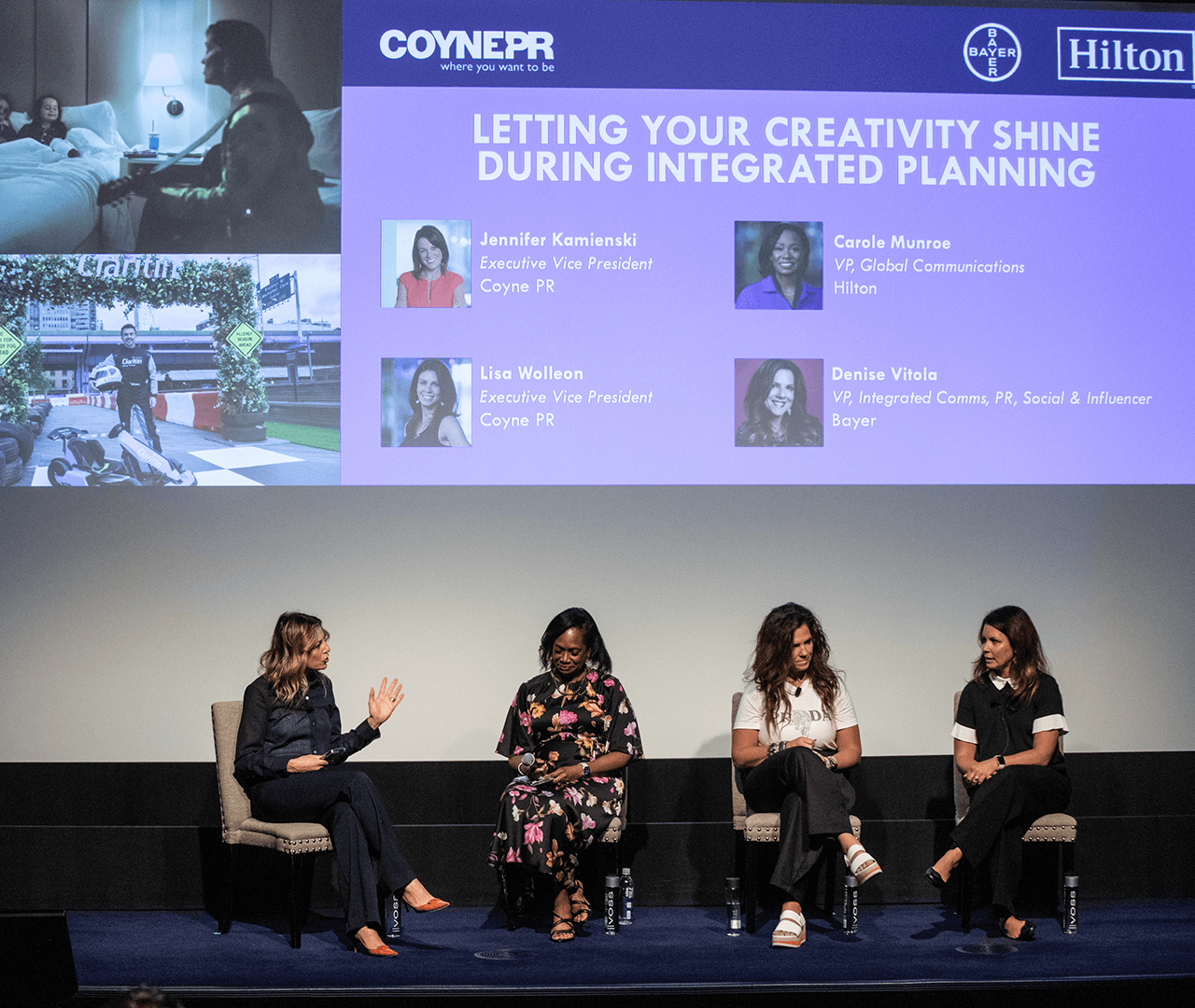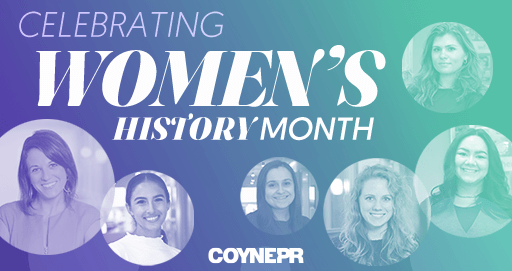It is often hard to hear the creative voice of communications during the integrated process. The public relations teams are told to play nice in the sandbox, but how can you play nice when the other kids are shouting over you? To better understand how to break through, Jenn Kamienski, EVP, Consumer Lifestyle for Coyne PR, led a panel discussion with her colleague, Lisa Wolleon, EVP, Consumer Health, Wellness & Beauty along with our clients Carole Munroe, VP, Global Communications with Hilton and Denise Vitola, VP of Integrated Communications for Bayer.
In exploring the integrated process during this conversation, it became clear that there are three keys to having PR heard in the room: innovation, creativity and patience. Through extensive experience implementing successful integrated marketing programs, our guests shared their expertise in crafting creative campaigns, and which approaches they find important to ensure their brand initiatives have a chance to stand out in today’s landscape.
The evolution of the integrated process
Having been a part of so many integrated committees and processes, the one constant in the past was the creative/advertising agency serving as the lead. Instead of being a truly integrated process, this often entailed the lead agency going off on their own and digging into the research, developing the compelling insight and the “aha” that would inform their creative. The integrated agency partners wouldn’t get pulled in until the creative platforms were already established. Now, we’re seeing a true shift in how that process works and this notion of all the marketing disciplines being equal in the room – because a well-integrated campaign idea can spark from anywhere. Part of what’s driving this shift is the savviness of the consumer. More and more brands are looking to reach younger demos, and while paid is still a key spoke in the integrated wheel, it’s not always the lead as it used to be. As a result, the value of earned has increased. When all the agencies build a strong insight together and thread it through every marketing discipline, that’s when the idea really resonates with the consumer you’re trying to reach.
How to ensure PR’s voice is not only heard but implemented
When it comes to defining what will be successful for your brand, you need to start with the end in mind. Providing a predictive outcome – an example of how this will show up in the media and what consumers will take away – makes it real and cuts out the ‘fuzziness’ in a powerful way. If you cannot boil your message down to a 20-second soundbite and ensure it’s simple and easy to understand, that’s a good indication the idea needs more work. With this mindset, you can challenge your own ideas so you can break through with an improved concept that will better help you achieve your goals. This tactic also helps sell in ideas to internal teams. Additionally, it’s important that any idea succinctly ladders back to the brief and squarely achieves what the brief is asking for. It needs to be intuitive and feel right to all players in the process.
The importance of pushing boundaries to get the best product
Oftentimes, it’s important to push boundaries and “beat up” an idea to ensure it is going to resonate with your consumer and communicate your message in a quality manner. The best way to do this is to work in an integrated fashion from the beginning. By looking at the idea through a variety of lenses – PR, Marketing, Social and Paid – you can simultaneously expand your thinking and fine-tune a concept.
Important tips in the integrated room
- Listen: Having a seat and a voice at the table is important, but it’s equally important to listen and value the other voices in the room. It’s a shared responsibility to dig in and create the insight.
- Educate: Spend time educating and bringing your integrated partners along the way. Smart and strategic ideas will rise to the top if you teach the team to answer the “why” articulated in the brief.
- Lead with Data: Get comfortable with leading with data. Data helps you both create the idea and support its worth.
- Be Creative and Think Expansively: Thinking outside the sandbox to create campaigns that capture the attention (first of those inside the room and then in the marketing hallway), is critical.
- Have Patience: Don’t get frustrated with the process and be open to the notion that a good idea can come from any discipline. How you all work together and collaborate to make it better is what makes the difference.



